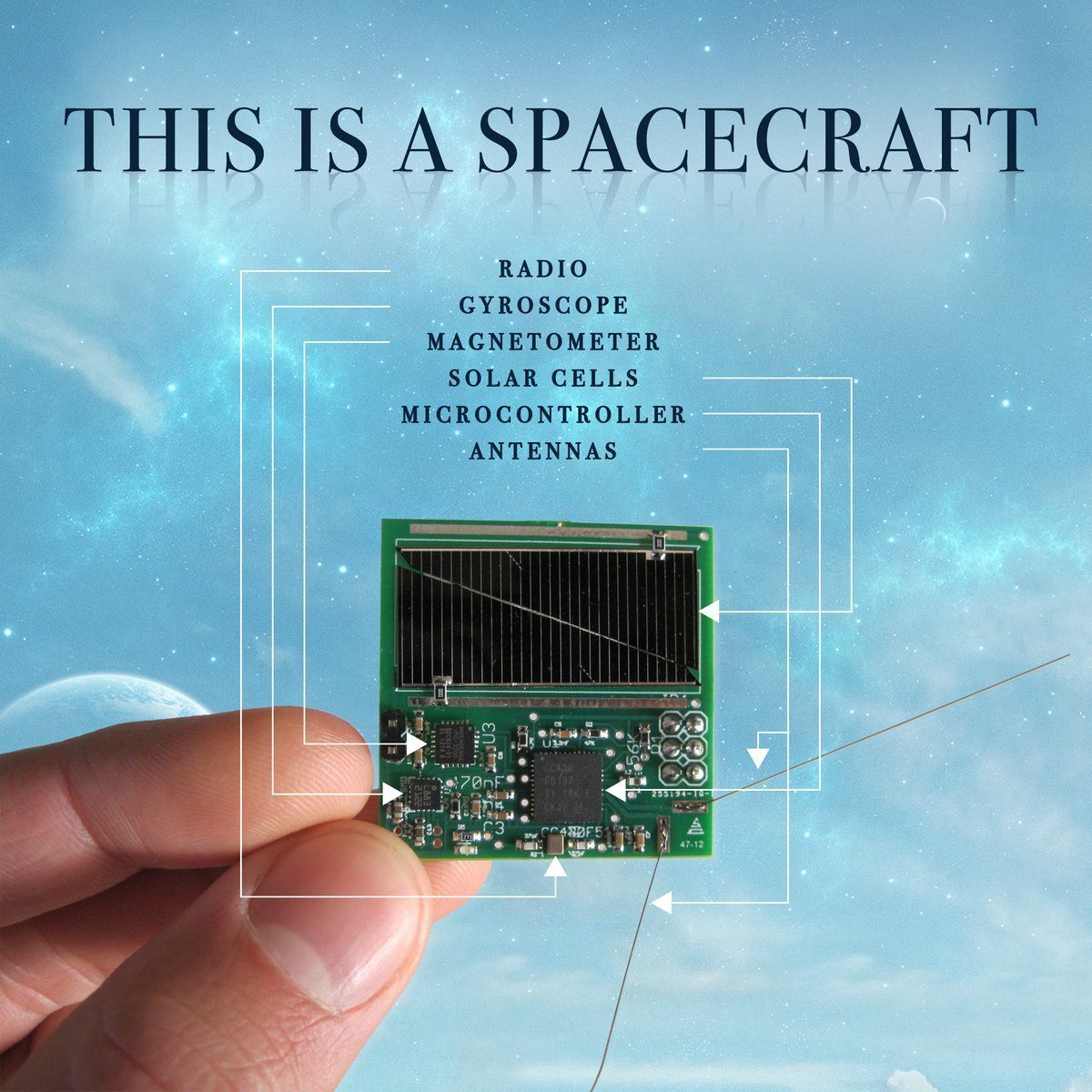For those who thought that 1kg CubeSat nanosatellites and 0.1-1kg picosats were the smallest satellites that would work, Stanford University is trying to prove that even smaller femtosats can also do the trick. They have devised a “Sprite Chipsat” configuration weighing in at less than 10g (actually nearer 5g). These “femtosat” sub-100g satellites are, in effect, very small 3.5 x 3.5cm electronics boards with other microelectronic instruments and even a solar cell array fitted. They are designed to be released en masse.
A previous attempt to operate 104 of these Sprite Chipsats by Cornell University was prevented when they failed to be deployed from its Kicksat carrier spacecraft in 2014. A smaller scale attempt also ended in failure when four Sprite Chipsats failed to be released with the Max Valier X-ray satellite in 2017 after a communications failure.
However, at 0340 GMT on 19 March Stanford University finally achieved deployment of what is thought to be all, or nearly all, of its 105 (exact number yet to be confirmed) Sprite Chipsat-style femtosat spacecraft from the Kicksat 2 carrier. Radio signals from this formation have been received to confirm this release.
Being so small, the spacecraft are very difficult to track individually by US Space Command and so are treated as more of a “shoal” acting as a single spacecraft. The low mass to area ratio of these tiny “spacecraft” is likely to result in very quick orbital decay and re-entry.
Comment by David Todd: These femtosat releases are treated for the purposes of event history as a single “shoal” of spacecraft on the Seradata SpaceTrak database. However, for the purpose of counting spacecraft, the total of these Sprite Chipsats is listed.







